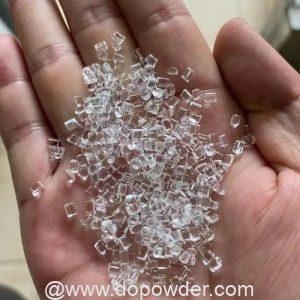What Is Modified Polyethylene ?

What Is Modified Polyethylene ?
The modified varieties of polyethylene mainly include chlorinated polyethylene, chlorosulfonated polyethylene, cross-linked polyethylene and blended modified varieties.
Chlorinated Polyethylene:
A random chloride obtained by partially replacing hydrogen atoms in polyethylene with chlorine. Chlorination is carried out under the initiation of light or peroxide, and is mainly produced by aqueous suspension method in industry. Due to the difference in molecular weight and distribution, branching degree, chlorination degree after chlorination, chlorine atom distribution and residual crystallinity of raw polyethylene, chlorinated polyethylene from rubbery to rigid plastic can be obtained. The main use is as a modifier of polyvinyl chloride to improve the impact resistance of polyvinyl chloride. Chlorinated polyethylene itself can also be used as electrical insulating material and ground material.
Chlorosulfonated polyethylene:
When polyethylene reacts with chlorine containing sulfur dioxide, part of the hydrogen atoms in the molecule are replaced by chlorine and a small amount of sulfonyl chloride groups to obtain chlorosulfonated polyethylene. The main industrial method is the suspension method. Chlorosulfonated polyethylene is resistant to ozone, chemical corrosion, oil, heat, light, abrasion and tensile strength. It is an elastomer with good comprehensive properties and can be used to make equipment parts that contact food.
XLPE:
Using radiation method (X-ray, electron beam or ultraviolet irradiation, etc.) or chemical method (peroxide or silicone cross-linking) to make linear polyethylene into network or bulk cross-linked polyethylene. Among them, the silicone cross-linking method has a simple process, low operating costs, and the molding and cross-linking can be carried out in steps, so blow molding and injection molding are suitable. The heat resistance, environmental stress cracking resistance and mechanical properties of cross-linked polyethylene are greatly improved compared with polyethylene, and it is suitable for large pipes, cables and wires, and rotomolding products.
Blending modification of polyethylene:
After blending linear low density polyethylene and low density polyethylene, it can be used to process films and other products, and the product performance is better than low density polyethylene. Polyethylene and ethylene propylene rubber can be blended to produce a wide range of thermoplastic elastomers
